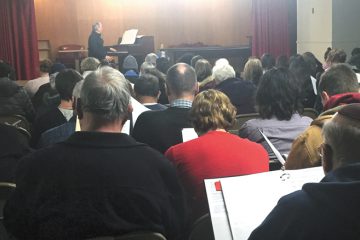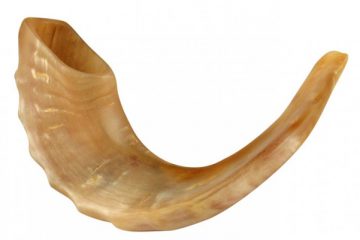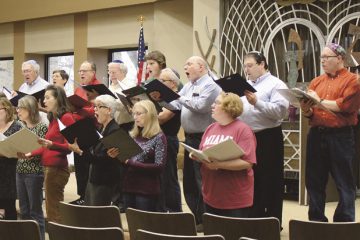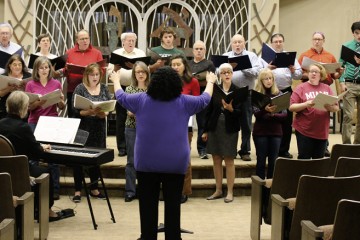School of Rock of Ages
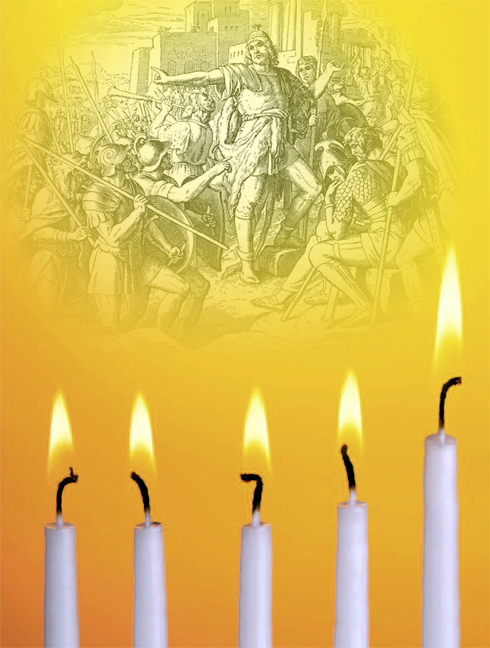
Our survival in song
By Cantor Jenna Greenberg, Special To The Dayton Jewish Observer
We have been on a hiatus from Jewish holidays, and now we prepare to celebrate Chanukah, our Festival of Lights. We commemorate the rededication of the Holy Temple, as well as the two famous miracles of the story: the victory over the Syrian-Greeks, and the oil that lasted for eight days.
When I think of this holiday, I hear the sounds of a wide variety of Chanukah songs and prayers that we sing during these eight days. But the iconic song of this festival is unquestionably Maoz Tzur, Rock of Ages. Its melody is familiar to many, and is considered to be the most famous tune of the holiday. But music aside, the text is a fascinating poetic rendering of the plights of the Jewish people.

Maoz Tzur is a 13th-century piyyut, a medieval poem, about the historic rescues of the Jews, from early biblical times, up through the post-biblical story of Judah the Maccabee. Traditionally, it is sung by Ashkenazim, Jews of central or eastern European descent, immediately following the lighting of the candles on each night of Chanukah.
Maoz Tzur was written by a paiytan, a medieval poet, named Mordechai. We know this because many European medieval poets would sign their name vertically, as an acrostic. In the case of Maoz Tzur, he signed his name with the first letter of each verse for the first five stanzas, four of which explicitly refer to different rescues through Israel’s history.
Thinking about the various rescues of Jews throughout history, I can’t help but recall the famous comical summary of these occasions: “They tried to kill us, we won, let’s eat!”
As we take a walk through the batim, the stanzas of Maoz Tzur, you will see how true this sentiment is. While this translation is not so singable, it most accurately represents the original Hebrew.
#1. My refuge, my rock of salvation! It is pleasant to sing your praises.
Let our house of prayer be restored. And there we will offer You our thanks.
When You will have slaughtered the barking foe.
Then we will celebrate with song and psalm the altar’s dedication.
We can see from this first verse that, other than the last line, this opening stanza could refer to any of the rescues soon to follow. The final line refers to the very title of our holiday, as the word Chanukah means rededication. Mordechai, the author, is setting the mood for the rest of the poem.
#2. My soul was sated with misery, My strength was spent with grief.
They embittered my life with hardship, when enslaved under the rule of Egypt.
But God with his mighty power brought out His treasured people;
While Pharaoh’s host and followers sank like a stone into the deep.
This second stanza recalls our Exodus from Egypt, one of the oldest and most famous stories in our Jewish experience, dated around 1200 B.C.E. We recall this story not only on the Festival of Passover, but this theme is also included every Friday night when we say the words of Kiddush, the blessing over the wine, sanctifying the Sabbath. We remember this story weekly, as it is the first biblical rescue in our people’s history.
#3. He brought me to His holy abode; even there, I found no rest.
The oppressor came and exiled me, because I served strange gods,
and drank poisonous wine. Yet scarcely had I gone into exile,
When Babylon fell and Zerubbabel took charge; within 70 years I was saved.
The rescue from Babylonia, 539 B.C.E., was the next occurrence of returning to our holy land after the Exodus from Egypt. This exile was predicted by the prophet Jeremiah in Chapter 25:12-13, from Nevi’im, the Prophets, the second of the three sections of our Tanakh, the Jewish Bible: Torah, Nevi’im, Ketuvim (Writings).
#4. The Agagite, son of Hammedatha, plotted to cut down the lofty fir;
But it proved a snare to him, and his insolence was silenced.
You raised the head of the Benjamite, but the enemy’s name You blotted out.
His numerous sons and his household You hanged upon the gallows.
From the third section of our Tanakh, Ketuvim, we find Megillat Esther. We recall the famous story of our Purim holiday, in which Queen Esther, with the help of her uncle/cousin Mordechai, saved the Persian Jews from Haman, a story dated to the 5th century B.C.E.
#5. The Greeks gathered against me, in days of the Hasmoneans.
They broke down the walls of my towers, and defiled all the oils.
But from the last remaining flask a miracle was wrought for the Jews.
Therefore the sages of the day ordained these eight for songs of praise.
Here we are, the rescue from Antiochus in 164 B.C.E., commemorating the very holiday on which we sing this song. Our Chanukah story, starring Judah the Maccabee, is the fourth of the rescues that has a whole stanza dedicated to its holiday. Whereas the first three come from the Tanakh, the Chanukah story comes from a post-biblical text, Megillat Antiochus, which is alluded to in the first and second books of Maccabees.
#6. O bare Your holy arm and hasten the time of salvation.
Wreak vengeance upon the wicked nation, on behalf of your faithful servants.
For deliverance has too long been delayed; and the evil days are endless.
O thrust the enemy into the shadows of death, and set up for us the seven shepherds.
This final verse alludes to other rescues throughout our history, the Crusades in particular, as well as to the seven shepherds, referred to in Micah 5:4, who will defeat the enemies of Israel.
What can we learn from Maoz Tzur? Perhaps we should focus our energy and strength on combating the evils in this world. May the words of Maoz Tzur inspire each of us to do our part in diminishing our enemies and strengthening the Jewish communities throughout the world.
Chag Urim Sameach, Happy Festival of Lights!
Cantor Jenna Greenberg teaches Judaics at Hillel Academy of Greater Dayton.
To read the complete December 2015 Dayton Jewish Observer, click here.


